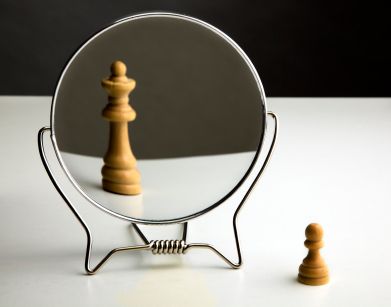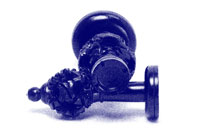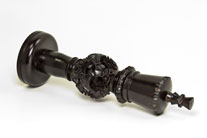Total Chess: Bishops & Weak Squares

Weak squares are squares that are not attacked or defended by pawns. While pieces are busy doing other things, pawns are left to control the squares around them. Since pawns attack and defend diagonally, they control squares that are the same color as their own square.
If most of your pawns are on dark squares, then you are strong on the dark squares and weak on the light squares. If most of your pawns are on light squares, then you are strong on the light squares and weak on the dark squares.
Bishops are affected by strong squares and weak squares more than any other piece. They are blocked by pawns on the same color squares, and they are free to move around pawns on the opposite color squares. You may think it is good to put your pawns on the same color squares as your bishop. If the pawns are attacked, then your bishop can protect them. But this makes your bishop a defender. Pieces have better things to do than protect pawns. Keep your pieces free to attack, defend, use tactics and get checkmates. Bishops are better when they can move around pawns. Do not block your bishops with pawns
Bishops may be good or bad, active or passive. A good bishop is one that is on the opposite color squares as most of its pawns, particularly its center pawns. A bad bishop is one that is on the same color squares as most of its pawns, particularly its center pawns. An active bishop is one that is out in front of its pawns or that is doing something important. A passive bishop is one that is behind its pawns or that is not doing anything important.
Obviously, you want to make your bishops good and active, and make the opponent’s bishops bad and passive. You do this with the pawn structure. Look for ways to make the pawn structure good for your bishops and bad for the opponent’s bishops. If you have a good bishop, keep it good, keep it active, and do not trade it for the opponent’s bad bishop or knight. If you have a bad bishop, make it good, make it active, or trade it for the opponent’s good bishop or knight.
A good bishop or a bad bishop is sometimes only a temporary thing. The pawns may move to change a bishop from good to bad, or from active to passive, or vice-versa. It is your job to make your bishops good and make the opponent’s bishops bad.
***
From the book, “TOTAL CHESS: Learn, Teach and Play the Easy 1-2-3 Way,” by John Herron
TOTAL CHESS is your complete guide to chess. It covers everything: rules, strategies, tactics and checkmates.
Everything in chess comes in threes. Three simple strategies are presented for the opening, midgame, endgame, etc. Each lesson is brief and covers one concept in simple language that everyone can read and understand.











Comments: